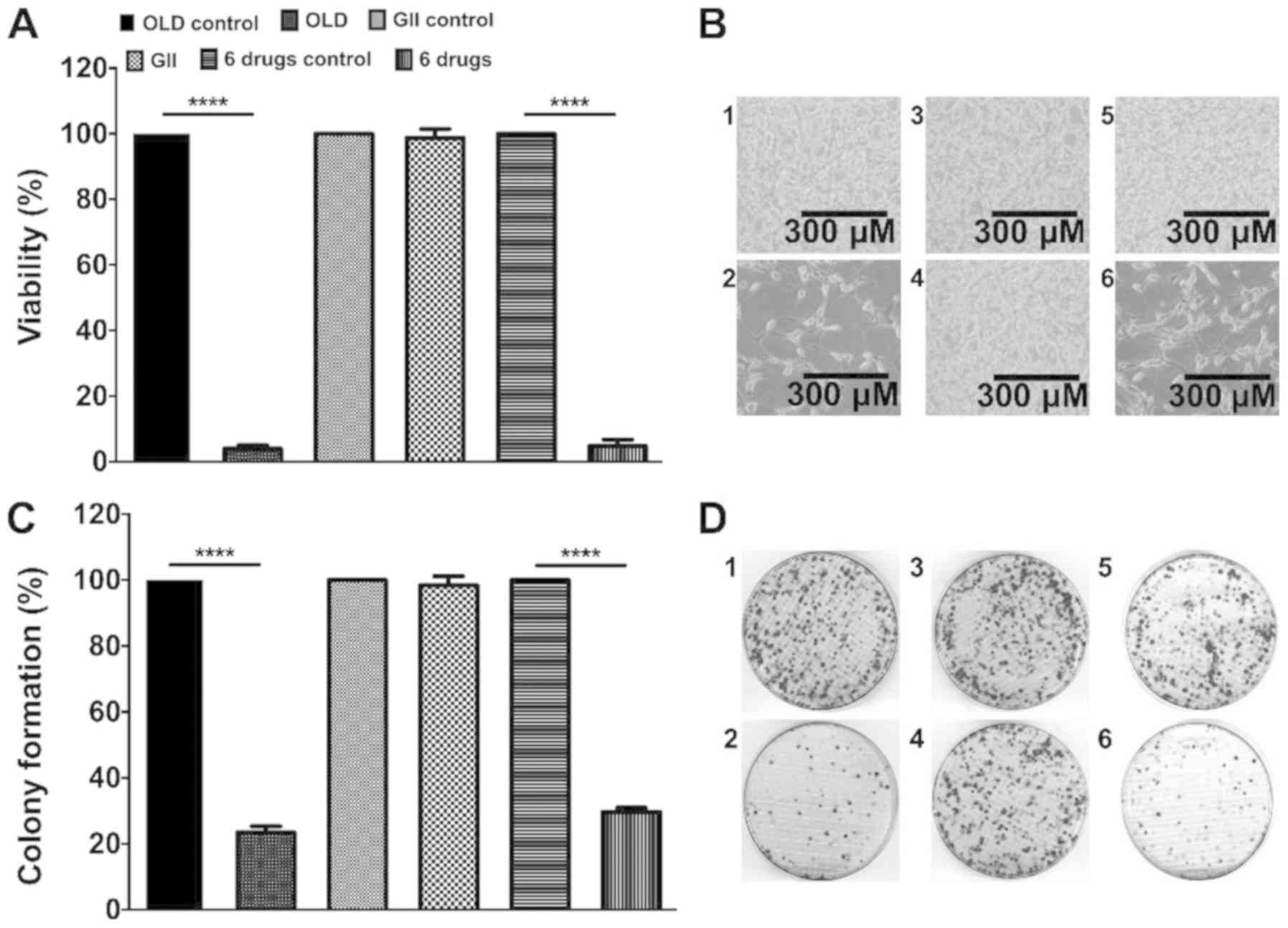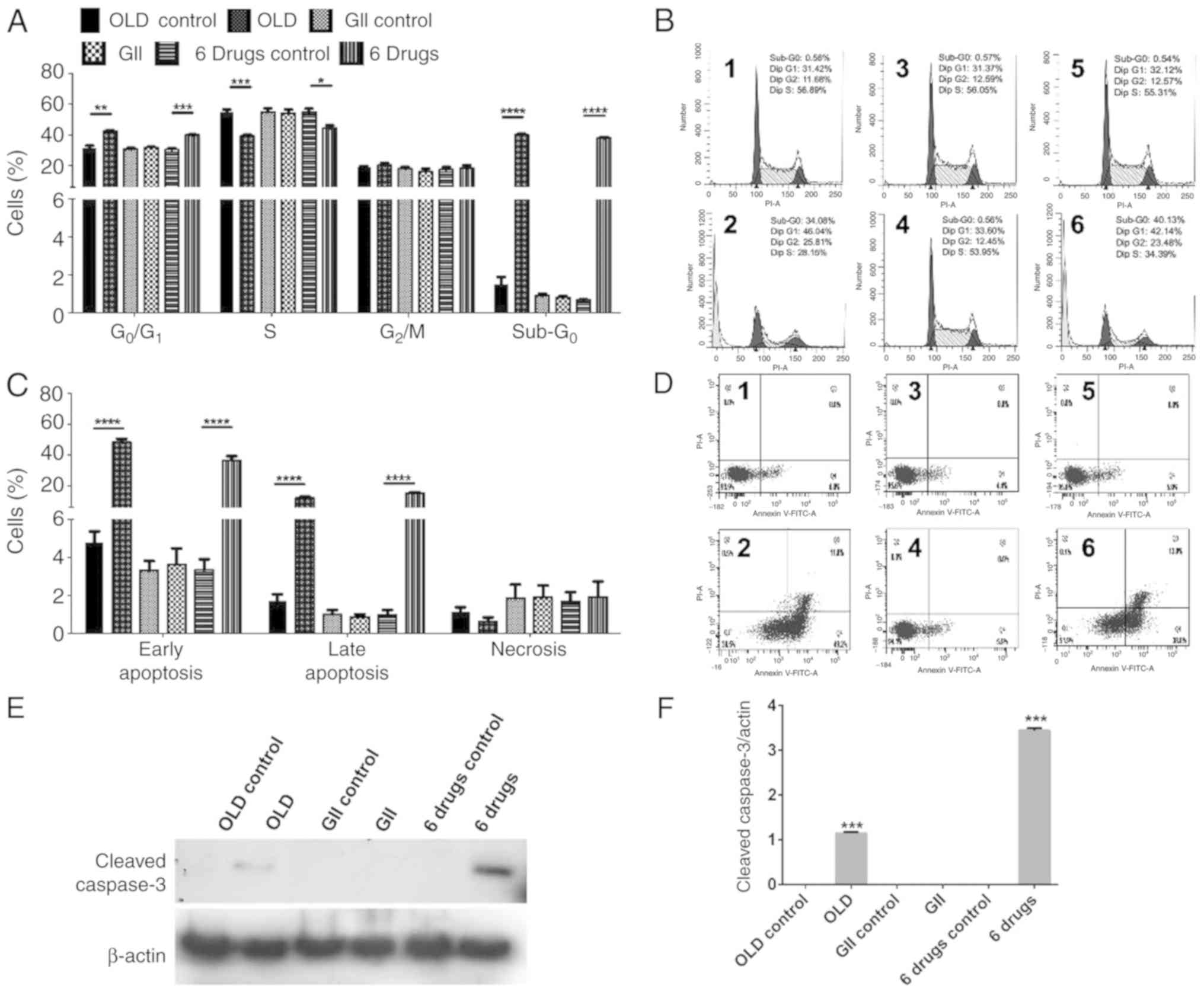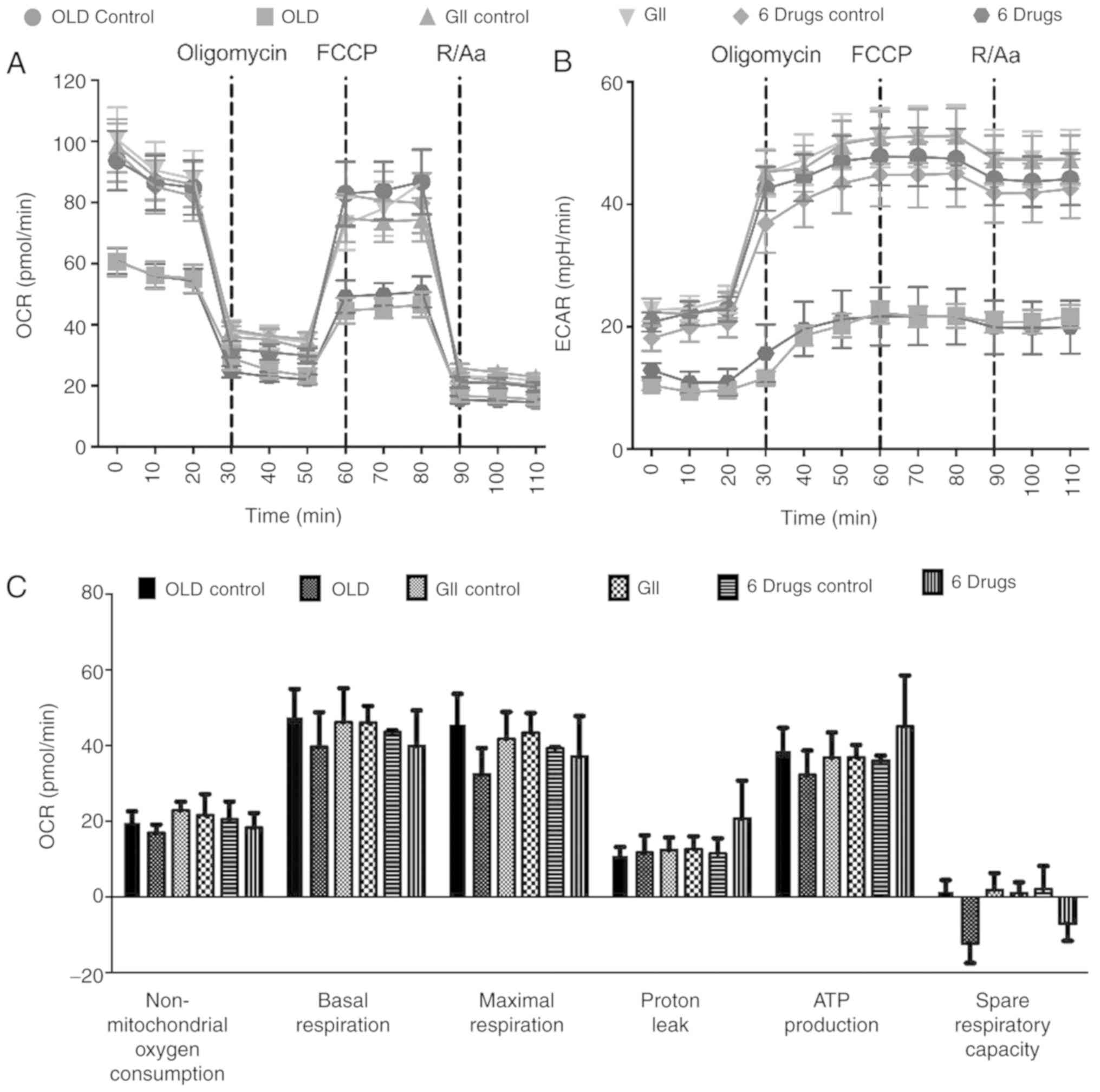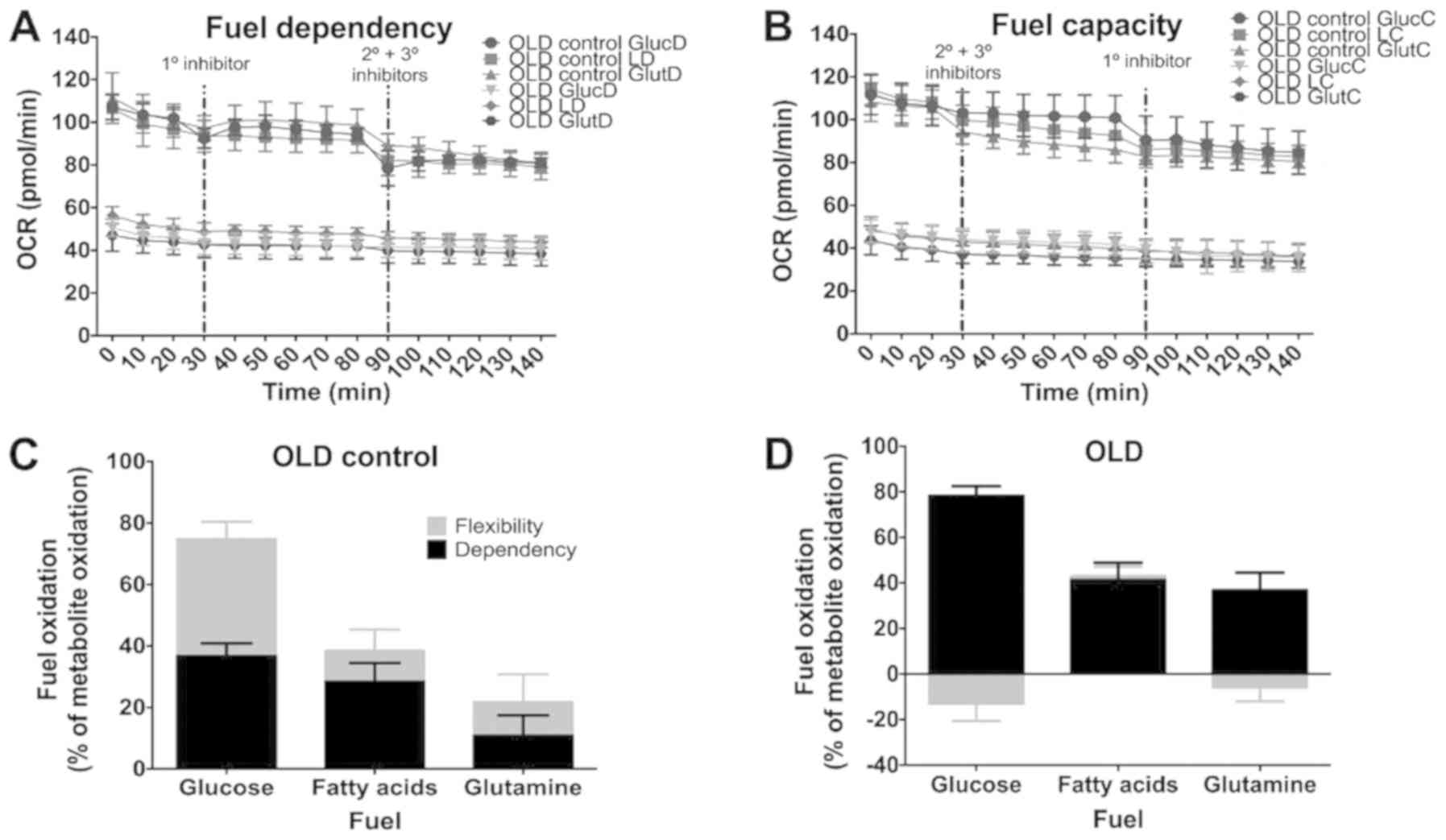|
1
|
Mathupala SP, Ko YH and Pedersen PL:
Hexokinase II: Cancer's double-edged sword acting as both
facilitator and gatekeeper of malignancy when bound to
mitochondria. Oncogene. 25:4777–4786. 2006. View Article : Google Scholar : PubMed/NCBI
|
|
2
|
Erickson JW and Cerione RA: Glutaminase: A
hot spot for regulation of cancer cell metabolism? Oncotarget.
1:734–740. 2010. View Article : Google Scholar : PubMed/NCBI
|
|
3
|
Menendez JA and Lupu R: Fatty acid
synthase and the lipogenic phenotype in cancer pathogenesis. Nat
Rev Cancer. 7:763–777. 2007. View
Article : Google Scholar : PubMed/NCBI
|
|
4
|
Guttridge DC, Mayo MW, Madrid LV, Wang CY
and Baldwin AS Jr: NF-kappaB-induced loss of MyoD messenger RNA:
Possible role in muscle decay and cachexia. Science. 289:2363–2366.
2000. View Article : Google Scholar : PubMed/NCBI
|
|
5
|
Tayek JA and Brasel JA: Failure of
anabolism in malnourished cancer patients receiving growth hormone:
A clinical research center study. J Clin Endocrinol Metab.
80:2082–2087. 1995. View Article : Google Scholar : PubMed/NCBI
|
|
6
|
DeBerardinis RJ and Cheng T: Q's next: The
diverse functions of glutamine in metabolism, cell biology and
cancer. Oncogene. 29:313–324. 2010. View Article : Google Scholar : PubMed/NCBI
|
|
7
|
Tijerina AJ: The biochemical basis of
metabolism in cancer cachexia. Dimens Crit Care Nurs. 23:237–243.
2004. View Article : Google Scholar : PubMed/NCBI
|
|
8
|
La Vecchia S and Sebastián C: Metabolic
pathways regulating colorectal cancer initiation and progression.
Semin Cell Dev Biol. 98:63–70. 2020. View Article : Google Scholar : PubMed/NCBI
|
|
9
|
Lewis NE and Abdel-Haleem AM: The
evolution of genome-scale models of cancer metabolism. Front
Physiol. 4:2372013. View Article : Google Scholar : PubMed/NCBI
|
|
10
|
Satoh K, Yachida S, Sugimoto M, Oshima M,
Nakagawa T, Akamoto S, Tabata S, Saitoh K, Kato K, Sato S, et al:
Global metabolic reprogramming of colorectal cancer occurs at
adenoma stage and is induced by MYC. Proc Natl Acad Sci USA.
114:E7697–E7706. 2017. View Article : Google Scholar : PubMed/NCBI
|
|
11
|
Schcolnik-Cabrera A, Dominguez-Gómez G,
Chávez-Blanco A, Ramírez-Yautentzi M, Morales-Bárcenas R,
Chávez-Díaz J, Taja-Chayeb L and Dueáas-González A: A combination
of inhibitors of glycolysis, glutaminolysis and de novo fatty acid
synthesis decrease the expression of chemokines in human colon
cancer cells. Oncol Lett. 18:6909–6916. 2019.PubMed/NCBI
|
|
12
|
Cervantes-Madrid D and Dueñas-González A:
Antitumor effects of a drug combination targeting glycolysis,
glutaminolysis and de novo synthesis of fatty acids. Oncol Rep.
34:1533–1542. 2015. View Article : Google Scholar : PubMed/NCBI
|
|
13
|
Maimaiti M, Tanahashi Y, Mohri Z and
Fujieda K: Development of a bioassay system for human growth
hormone determination with close correlation to immunoassay. J Clin
Lab Anal. 26:328–335. 2012. View Article : Google Scholar : PubMed/NCBI
|
|
14
|
de la Peña A, Riddle M, Morrow LA, Jiang
HH, Linnebjerg H, Scott A, Win KM, Hompesch M, Mace KF, Jacobson
JG, et al: Pharmacokinetics and pharmacodynamics of high-dose human
regular U-500 insulin versus human regular U-100 insulin in healthy
obese subjects. Diabetes Care. 34:2496–2501. 2011. View Article : Google Scholar : PubMed/NCBI
|
|
15
|
Manvelian G, Daniels S and Altman R: A
phase I study evaluating the pharmacokinetic profile of a novel,
proprietary, nano-formulated, lower-dose oral indomethacin.
Postgrad Med. 124:197–205. 2012. View Article : Google Scholar : PubMed/NCBI
|
|
16
|
Schneider CA, Rasband WS and Eliceiri KW:
NIH Image to ImageJ: 25 years of image analysis. Nat Methods.
9:671–675. 2012. View Article : Google Scholar : PubMed/NCBI
|
|
17
|
Zaytseva YY, Harris JW, Mitov MI, Kim JT,
Butterfield DA, Lee EY, Weiss HL, Gao T and Evers BM: Increased
expression of fatty acid synthase provides a survival advantage to
colorectal cancer cells via upregulation of cellular respiration.
Oncotarget. 6:18891–18904. 2015. View Article : Google Scholar : PubMed/NCBI
|
|
18
|
Pavlova NN and Thompson CB: The Emerging
Hallmarks of Cancer Metabolism. Cell Metab. 23:27–47. 2016.
View Article : Google Scholar : PubMed/NCBI
|
|
19
|
Clem BF, O'Neal J, Klarer AC, Telang S and
Chesney J: Clinical development of cancer therapeutics that target
metabolism. QJM. 109:367–372. 2016. View Article : Google Scholar : PubMed/NCBI
|
|
20
|
Cervantes-Madrid D, Romero Y and
Dueñas-González A: Reviving lonidamine and
6-diazo-5-oxo-l-norleucine to be used in combination for metabolic
cancer therapy. BioMed Res Int. 2015:6904922015. View Article : Google Scholar : PubMed/NCBI
|
|
21
|
Kridel SJ, Axelrod F, Rozenkrantz N and
Smith JW: Orlistat is a novel inhibitor of fatty acid synthase with
antitumor activity. Cancer Res. 64:2070–2075. 2004. View Article : Google Scholar : PubMed/NCBI
|
|
22
|
Schcolnik-Cabrera A, Chávez-Blanco A,
Domínguez-Gómez G, Taja-Chayeb L, Morales-Barcenas R,
Trejo-Becerril C, Perez-Cardenas E, Gonzalez-Fierro A and
Dueñas-González A: Orlistat as a FASN inhibitor and multitargeted
agent for cancer therapy. Expert Opin Investig Drugs. 27:475–489.
2018. View Article : Google Scholar : PubMed/NCBI
|
|
23
|
Bhutia YD, Babu E and Ganapathy V:
Re-programming tumour cell metabolism to treat cancer: No lone
target for lonidamine. Biochem J. 473:1503–1506. 2016. View Article : Google Scholar : PubMed/NCBI
|
|
24
|
Thangavelu K, Chong QY, Low BC and
Sivaraman J: Structural basis for the active site inhibition
mechanism of human kidney-type glutaminase (KGA). Sci Rep.
4:38272014. View Article : Google Scholar : PubMed/NCBI
|
|
25
|
Pemble CW IV, Johnson LC, Kridel SJ and
Lowther WT: Crystal structure of the thioesterase domain of human
fatty acid synthase inhibited by Orlistat. Nat Struct Mol Biol.
14:704–709. 2007. View
Article : Google Scholar : PubMed/NCBI
|
|
26
|
Schcolnik-Cabrera A, Chávez-Blanco A,
Domínguez-Gómez G and Dueñas-González A: Understanding tumor
anabolism and patient catabolism in cancer-associated cachexia. Am
J Cancer Res. 7:1107–1135. 2017.PubMed/NCBI
|
|
27
|
Mondello P, Mian M, Aloisi C, Famà F,
Mondello S and Pitini V: Cancer cachexia syndrome: Pathogenesis,
diagnosis, and new therapeutic options. Nutr Cancer. 67:12–26.
2015. View Article : Google Scholar : PubMed/NCBI
|
|
28
|
Manson JM and Wilmore DW: Positive
nitrogen balance with human growth hormone and hypocaloric
intravenous feeding. Surgery. 100:188–197. 1986.PubMed/NCBI
|
|
29
|
Ward HC, Halliday D and Sim AJ: Protein
and energy metabolism with biosynthetic human growth hormone after
gastrointestinal surgery. Ann Surg. 206:56–61. 1987. View Article : Google Scholar : PubMed/NCBI
|
|
30
|
Cersosimo E, Pisters PW, Pesola G, Rogatko
A, Vydelingum NA, Bajorunas D and Brennan MF: The effect of graded
doses of insulin on peripheral glucose uptake and lactate release
in cancer cachexia. Surgery. 109:459–467. 1991.PubMed/NCBI
|
|
31
|
Pearlstone DB, Wolf RF, Berman RS, Burt M
and Brennan MF: Effect of systemic insulin on protein kinetics in
postoperative cancer patients. Ann Surg Oncol. 1:321–332. 1994.
View Article : Google Scholar : PubMed/NCBI
|
|
32
|
Moley JF, Morrison SD and Norton JA:
Insulin reversal of cancer cachexia in rats. Cancer Res.
45:4925–4931. 1985.PubMed/NCBI
|
|
33
|
Noguchi Y, Nomura K, Yoshikawa T, Fukuzawa
K, Makino T, Tsuburaya A and Matsumoto A: Role of insulin
resistance in decreasing lipoprotein lipase activity in
tumor-bearing rats. Surg Today. 26:271–275. 1996. View Article : Google Scholar : PubMed/NCBI
|
|
34
|
Hitt A, Graves E and McCarthy DO:
Indomethacin preserves muscle mass and reduces levels of E3 ligases
and TNF receptor type 1 in the gastrocnemius muscle of
tumor-bearing mice. Res Nurs Health. 28:56–66. 2005. View Article : Google Scholar : PubMed/NCBI
|
|
35
|
Lundholm K, Daneryd P, Körner U, Hyltander
A and Bosaeus I: Evidence that long-term COX-treatment improves
energy homeostasis and body composition in cancer patients with
progressive cachexia. Int J Oncol. 24:505–512. 2004.PubMed/NCBI
|
|
36
|
Griffiths M, Keast D, Patrick G, Crawford
M and Palmer TN: The role of glutamine and glucose analogues in
metabolic inhibition of human myeloid leukaemia in vitro. Int J
Biochem. 25:1749–1755. 1993. View Article : Google Scholar : PubMed/NCBI
|
|
37
|
Meijer TWH, Peeters WJM, Dubois LJ, van
Gisbergen MW, Biemans R, Venhuizen JH, Span PN and Bussink J:
Targeting glucose and glutamine metabolism combined with radiation
therapy in non-small cell lung cancer. Lung Cancer. 126:32–40.
2018. View Article : Google Scholar : PubMed/NCBI
|
|
38
|
Cohen P, Clemmons DR and Rosenfeld RG:
Does the GH-IGF axis play a role in cancer pathogenesis? Growth
Horm IGF Res. 10:297–305. 2000. View Article : Google Scholar : PubMed/NCBI
|
|
39
|
Chen JY, Liang DM, Gan P, Zhang Y and Lin
J: In vitro effects of recombinant human growth hormone on growth
of human gastric cancer cell line BGC823 cells. World J
Gastroenterol. 10:1132–1136. 2004. View Article : Google Scholar : PubMed/NCBI
|
|
40
|
Liang DM, Chen JY, Zhang Y, Gan P, Lin J
and Chen AB: Effects of recombinant human growth hormone on growth
of human gastric carcinoma xenograft model in nude mice. World J
Gastroenterol. 12:3810–3813. 2006. View Article : Google Scholar : PubMed/NCBI
|
|
41
|
Harrison LE, Blumberg D, Berman R, Ng B,
Hochwald S, Brennan MF and Burt M: Effect of human growth hormone
on human pancreatic carcinoma growth, protein, and cell cycle
kinetics. J Surg Res. 61:317–322. 1996. View Article : Google Scholar : PubMed/NCBI
|
|
42
|
Lu CC, Chu PY, Hsia SM, Wu CH, Tung YT and
Yen GC: Insulin induction instigates cell proliferation and
metastasis in human colorectal cancer cells. Int J Oncol.
50:736–744. 2017. View Article : Google Scholar : PubMed/NCBI
|
|
43
|
Chen X, Liang H, Song Q, Xu X and Cao D:
Insulin promotes progression of colon cancer by upregulation of
ACAT1. Lipids Health Dis. 17:1222018. View Article : Google Scholar : PubMed/NCBI
|
|
44
|
Dulskas A, Patasius A,
Linkeviciute-Ulinskiene D, Zabuliene L and Smailyte G: A cohort
study of antihyperglycemic medication exposure and survival in
patients with gastric cancer. Aging (Albany NY). 11:7197–7205.
2019.PubMed/NCBI
|
|
45
|
Baglia ML, Cui Y, Zheng T, Yang G, Li H,
You M, Xu L, Murff H, Gao YT, Zheng W, et al: Diabetes medication
use in association with survival among patients of breast,
colorectal, lung, or gastric cancer. Cancer Res Treat. 51:538–546.
2019. View Article : Google Scholar : PubMed/NCBI
|
|
46
|
Karlstad O, Starup-Linde J, Vestergaard P,
Hjellvik V, Bazelier MT, Schmidt MK, Andersen M, Auvinen A, Haukka
J, Furu K, et al: Use of insulin and insulin analogs and risk of
cancer - systematic review and meta-analysis of observational
studies. Curr Drug Saf. 8:333–348. 2013. View Article : Google Scholar : PubMed/NCBI
|














